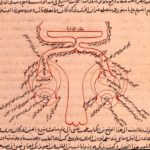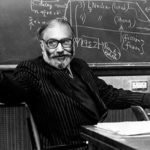
The Islamic religion did not adopt a position of opposition to science (as a general concept), and the same also goes for the other Abrahamic faiths Judaism and Christianity. The best illustration of the acceptance of scientific endeavour by Islam as a religion is the scientific resurgence of the Abbasid period, a result of cultural and intellectual opening under the influence of the Mu’tazila.
MU’TAZILI THOUGHT – an Islamic thought – led to a scientific resurgence of huge proportions according to the standards of the time. But from the ninth century onwards an alternative Islamic intellectual pattern (such as Ash’ari and Maturidi thought) warred against the mind and science so that the scholars of the scientific resurgence of the Abbasid period came to be considered beyond the pale of Islam. This view has remained in force up to our own time among the institutions of contemporary religious thought.[1]
Science underwent opposition, even religious warfare, from Islamic, Christian and Jewish thinking in many and various forms. But Islamic thought was at the forefront in its hostility to scientific thinking. Its war against the intellect began with the era of the Abbasid al-Mu’tadid (870-892) and the latter’s well-known position on the Mu’tazila. Scientific thought had yet to crystallize but a pattern of intellectual thinking lay behind the growth scientific activity in various cultures during this period. Warfare against the intellect reached its peak in the 11th century when the intellectual red lines of Islamic thought were given a theoretical framework. Intellectual freedom and philosophy were proscribed (by al-Ghazali and Ibn Taymiyya and others) and the red lines led to cultural regression – a peril that Islamic societies lived through and still experience today.[2] Since the 12th and 13th centuries Al-Hasan ibn al-Haytham, Ibn Sina and al-Razi, and all the scholars of the abortive resurgence, have been written off as infidel and disdained.[3]
The Catholic inquisition courts began in the 12th century, but their confrontation with science took place in the 15th century when the church championed the Aristotelian astronomic theory which some other scholars rejected. But because the seeds of philosophy were deeply rooted in the West, Christian thought was unable to suppress scientific thinking and intellectual freedom.
As for Judaism, it also took a polemical position to scientific discoveries that were not in accordance with what was contained in the sacred texts. But this did not get to the point of warfare against the intellect as Islamic thought applied it, or warfare against the person as the Catholic Church applied it. Some scholars attempted to reconcile the two modes of thought, one of the most conspicuous of them being Rabbi Moses Maimonides of Cordoba (1135-1204) who lived at the time of the beginning of scientific regression in Arab Islamic culture.
After the Reformation schism in the church, after the phases of the inquisitorial courts had passed and scientific thinking attained an independence, the Christian church developed its view on science so that even though it may not recognize some scientific theories that are prevalent now, it does not reject scientific thought as an investigative method.
Islamic thought was at the forefront in its hostility to scientific thinking
Today the Vatican maintains scientific interests and has its own research centre in the form of the Pontifical Academy of Sciences.[4] It functions according to the scientific investigative method and does not propose any theory of ‘Christianizing’ knowledge. The Pontifical Academy was founded in 1936 and aimed at promoting scholarly progress in the sciences, mathematics, physics and other intellectual studies related to science. Some of its members are atheist scholars of the calibre of the British physicist Stephen Hawking. The Vatican also has an observatory for astronomical research at Rome. The Vatican’s view on science developed further following the self-criticism directed by Pope John Paul II in 1992, when he declared that the verdict issued by the church in the 17th century against the Italian astronomer Galileo Galilei was a mistake, caused by a tragic mutual misunderstanding.[5] In January 2008 Pope Benedict XVI honoured Galileo the astronomer and said that Galileo and other scholars helped the faithful better understand and “contemplate with gratitude the Lord’s works.”[6] Not only that, the website of the Pontifical Academy posted an image of Galileo on its home page.
Another position taken by the Church on science is the adjustment of its view on the problem of the theory of evolution, a theory which totally conflicts with the story of creation as presented in the Holy Bible. In 1996, an encyclical sent by Pope John Paul II to the Pontifical Academy of Sciences, contained the following:
Today, almost half a century after publication of the encyclical [Humani Generis], new knowledge has led to the recognition of the theory of evolution as more than a hypothesis. It is indeed remarkable that this theory has been progressively accepted by researchers, following a series of discoveries in various fields of knowledge. The convergence, neither sought nor fabricated, of the results of work that was conducted independently is in itself a significant argument in favour of the theory.[7]
There is no doubt that this is a momentous speech of great importance, coming as it does from the top of the ecclesiastical pyramid, and reflects a fine perception on the understanding on the nature of objective scientific endeavour. Self-criticism on standpoints that have nothing to do with sanctity resolves and aids to the solution of many problems that may have a religious or historical dimension. The Church’s rapprochement with science is not entirely complete yet it has clearly taken a bold step in the right direction, one that will develop further.

Suggested Reading
The Islamization of science and its intellectual problem – 1
Meanwhile we find that there are many Christian clerics who worked in the scientific arena, which itself indicates that there was no opposition between the methodology of scientific thought (as opposed to the product of scientific activity) and Christian thought. One of the earliest clerics who concerned himself with science and developed it further was Nicolas Copernicus (1473-1543). Although he was a Catholic priest, Copernicus nevertheless rejected Aristotelian cosmology and the centrality of the earth which the Catholic Church had adopted, and instead presented an alternative, heliocentric theory. For doing so he ended up living a rootless life, having to flee from the ecclesiastical authorities, and his theory was condemned in 1616. But the church did not persist in its intransigence in that in 1835 it waived its condemnation and acknowledged the heliocentric system.

Suggested Reading
The Islamization of science and its intellectual problem – 2
There is also the Austrian geneticist Gregor Mendel (1822-1884) who was likewise a Christian cleric, and whose experiments led him to discover one of the most important laws of genetics. A modern scholar is the Belgian scientist Georges Lemaitre (1894-1966) who propounded the Big Bang theory, now considered to be the most widely acceptable theory on the origins of the universe. Lemaitre was a Christian cleric who clearly grasped the scientific research method. There are many devout Catholic researchers and scientists who do not find any contradiction between their critical scientific thinking and their faith, and each one of them has their own conception of how to handle the question of faith and the embrace of scientific thought.
Over the course of time Christian thought was able to pair up to a certain extent with scientific thinking whilst Islamic thought persists in rejecting the rational mindset. There is no doubt that it was the shallow roots of Islamic philosophical speculation that prevented the Mu’tazila from standing firm and making a comeback. Scientific activity accordingly came to an end as the intellect waned following the demise of Islamic thought as conceived and practiced by the Mu’tazila.[8]
[1] Nasir ibn Hamad al-Fahd, حقيقة الحضارة الاسلامية (‘The Truth of Islamic Culture’), http://www.tawhed.ws/r?i=008j8m2r , retrieved 22-12-2011.
[2] M. I. Sanduk, Growth of science under the social influence in Arabic-Islamic and Western Civilisations, 700-1900 (Statistical Models). http://philsci-archive.pitt.edu/9012/
[3] فتاوى شيخ الاسلام: ٣٥/١٣٥، درء التعارض: ٢/٢٨١، الحاديات في نذكراته – في تاريخ الفلاسفة ص٢٧٠ ومجموع الفتاوى: ٩/٢١٤-٢١٥. الرد على المنطقيين ص١٤١.
[4] Pontifical Academy of Sciences http://www.vatican.va/roman_curia/pontifical_academies/acdscien/
[5] “Vatican admits Galileo was right”. New Scientist. 1992-11-07. http://www.newscientist.com/article/mg13618460.600-vatican-admits-galileo-was-right-.html. Retrieved 26-2-2012
[6] http://www.zimbio.com/The+Roman+Catholic+Church/articles/432/Message+Galileo+Forgiven. Retrieved 26-2-2012
[7] Oggi, circa mezzo secolo dopo la pubblicazione dell’Enciclica, nuove conoscenze conducono a non considerare più la teoria dell’evoluzione una mera ipotesi. È degno di nota il fatto che questa teoria si sia progressivamente imposta all’attenzione dei ricercatori, a seguito di una serie di scoperte fatte nelle diverse discipline del sapere. La convergenza non ricercata né provocata, dei risultati dei lavori condotti indipendentemente gli uni dagli altri, costituisce di per sé un argomento significativo a favore di questa teoria. Pope John Paul II, Message to the Pontifical Academy of Science: On Evolution, http://www.unigre.it/cssf/it/documenti/evoluzione.htm .
[8] M. I. Sanduk, ‘The Natural Sciences between Religion and Religious Thought,’ Almuslih.
Main image: Astronomer Galileo Galilei: reinstated following self-criticism in the Vatican


